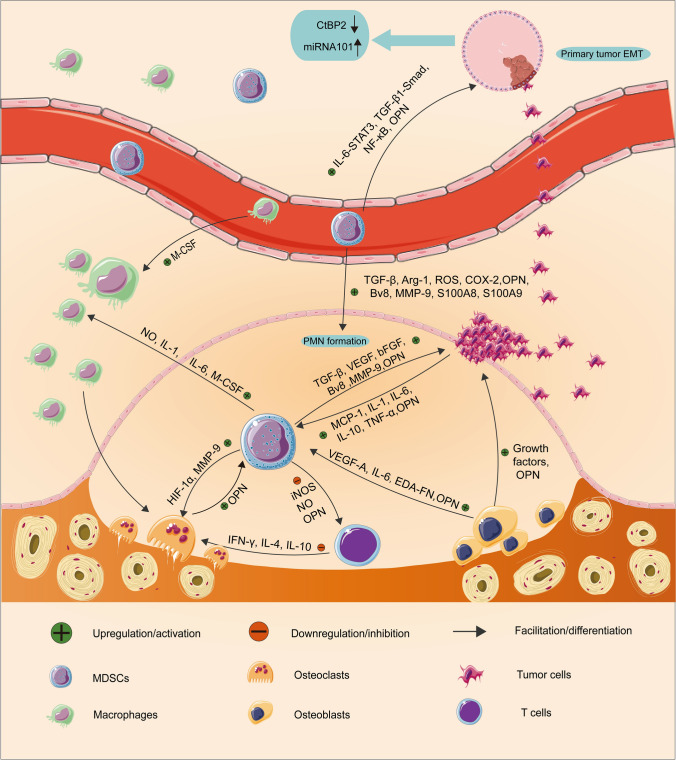Fig. 1.
The role of MDSCs in bone metastasis. Initially, MDSCs promote EMT of primary tumor cells via IL-6-STAT3, TGF-β1/Smad as well as NF-κB signaling. Besides, MDSCs trigger the expression of miRNA101 in tumor cells, which subsequently inhibits the CtBP2. Then, MDSCs secrete TGF-β, Arg-1, ROS, COX-2, Bv8, MMP-9, S100A8, S100A9, and OPN, which are involved in the formation and evolution of multiple features of PMN, and PMN provide a favorable survival environment for disseminated tumor cells. In addition, MDSCs can also lay an important role in the growth phase of tumors via the release of VEGF, bFGF, VEGF analogues Bv8, MMP-9, and OPN to regulate the tumor microenvironment at the metastatic site. Reciprocally, tumor cells secrete MCP-1, IL-1, IL-6, IL-10, TNF-α, and OPN to promote MDSCs. MDSCs differentiate into osteoclasts through HIF-1α signaling or express MMP-9 to induce osteoclasts migration. In addition, MDSCs may also stimulate endogenous macrophages to differentiate into osteoclasts by secreting NO, IL-1, IL-6, M-CSF. Osteoblasts also promote the release and activation of MDSCs through upregulating VEGF-A, IL-6, and EDA-FN. In addition, osteoblasts and osteoclasts also produce OPN to act on MDSCs as well as tumor cells. Moreover, MDSCs dampen T cells to secret osteoclastogenesis inhibitors, including IFN-γ, IL-4, and IL-10, thereby indirectly boosting the process of bone resorption

